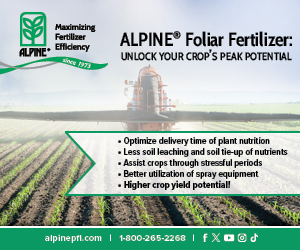Corn residues challenge no-till operations
FINDING BALANCE BETWEEN NO-TILL AND RESIDUE MANAGEMENT

CROP RESIDUE MANAGEMENT has always been integral to successful no-till soybean production. However, over the last few years, no-till soybean growers seem to be combating more corn residues than in the past. Unfortunately, this increase is difficult to quantify as corn residues are rarely measured. But, field experience is clearly showing that corn residues are becoming a greater challenge.
tackling more residue
Although the research on increasing corn residue is scarce, there are many logical explanations of why growers might be facing more residue. Corn’s success over the past two decades can largely account for the increase in residue. The average corn yield from 1995 to 1999 was 120 bushels per acre in Ontario. From 2005 to 2009, the average increased to 146 bushels per acre. This increase alone represents about 21 percent more residue.
In addition to the yield increase, corn producers have also been benefiting from the success of higher corn seeding rates and longer season hybrids. Logically, more plants per acre will result in more residue and longer season hybrids are often wetter in the fall which can cause a delayed harvest. If harvest is delayed there is less time for corn residues to break down.
More robust corn is also a culprit in the increase in residue. Hybrids grown today are more stress and disease tolerant and many have genetic insect protection. This does not mean that they will decompose more slowly but it could mean that they are more robust at the end of the season leaving healthier stalks to break down. Foliar fungicides can also leave more robust residue in the fall.
A final possible cause for the increasing challenges farmers are facing with corn residue is the practice of earlier soybean seeding. More soybeans are now seeded in early May or even late April compared to later in the spring. This means that corn residues have higher moisture and are tougher at soybean seeding time.
negative side effects
Residues cause a number of significant problems in soybean fields. If the residue is heavy it can interfere with good drill or planter performance which can put soybeans at risk right from the start. Specifically, it is very difficult to achieve consistent seeding depth in high residue situations. Low plant stands can be caused just because of poor planter performance due to high residues.
Large amounts of residue also make nitrogen less available for the soybean crop resulting in slow growth and pale looking crops. Photo 1 shows evidence of this phenomenon.
Residues also harbour pests such as slugs. In a wet year, slugs can decimate soybean plants early in the season. Unfortunately, there are no effective management tools to control slugs except to minimize the amount of surface residue. In some parts of the US, growers have gone back to some form of tillage just to control slugs.
Many disease causing organisms also survive in plant residues. Residues are a natural environment and food source for these pathogens. If the residues are left on the surface, they break down more slowly increasing the risk of disease problems in the soybean crop. Table 1 provides a list of soybean diseases and how they can be impacted by excess corn residues.
potential solutions
No-till is desirable for sustainable agriculture largely because it reduces soil erosion along with its obvious economic benefits. On the other hand, burying the residue is desirable for vigorous early season crop development.
Historically, pathologists felt it was necessary to remove most or all of the surface residues to reduce the risk of diseases in soybeans. This thinking has changed. It’s now believed that only partially burying the residue can be just as useful in reducing the risk of disease as using the plough. The ideal situation is to bury enough of the residue to reduce the risk of disease but leave sufficient residue on the surface to help reduce erosion. Leaving 30 to 60 percent of the residue on the surface will achieve the best of both worlds. It will reduce disease and should keep erosion in check.
Growers have a few options available to achieve this ideal residue balance. Upgrading planters and drills with more aggressive row cleaners or coulters may be an alternative to tillage for some farmers. The challenge with this option is the need to compromise on row width. Narrow rows are desirable for high yields in soybeans but in 15 inch rows, it’s hard to find enough room between the rows to throw the trash and in 7.5 inch rows it’s impossible.
A few growers have managed to get around this problem by converting to twin rows. In this case, a separate row cleaning unit with aggressive trash cleaners is run before seeding time to prepare a zone clear of residue but with very little soil disturbance (see photo 2). Others have been successful in simply running aggressive coulters in the seed row at planting time (see photo 3). This does not push the trash very far off the row but it can significantly improve drill performance in heavy residue.
A third possible management practice is pre-tillage. Planting no-till fields is often done later than conventionally tilled fields due to increased moisture and cooler soil conditions in the spring because of the extra surface residue. Some producers mitigate this problem with springtime minimal tillage (pre-tillage). Tillage with a one pass coulter unit run in the spring has shown a small yield benefit and provided more yield results than drill mounted coulter systems in experiments (see Table 2). Unfortunately, under heavy residue situations one or even two passes does not seem sufficient to bury the residue. Experiments are currently being done running one pass coulter systems in the fall after corn harvest to break down enough corn residue for successful no-till soybean planting the following spring.
an integrated approach is best
Ultimately, higher residues levels are a positive development because they are the natural outcome of higher corn yields, which is a step forward. The challenge now is to deal with these increased residues without going back to the plough. There are potential solutions, but they all require some level of compromise, be it aggressive planter tillage, wider rows or more passes in the field. At the end of the day we do not have the full answer yet but it will probably be a combination of improved seeding equipment and minimal tillage that will provide the best economic and sustainable system for soybean growers. •

















